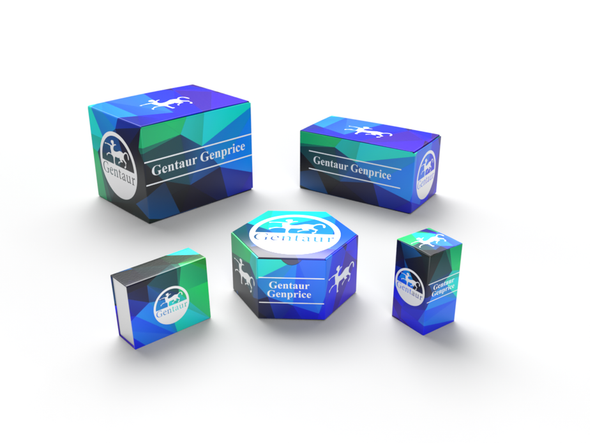LBD
RUNX1 Antibody (S276) [APR05077G]
- SKU:
- LBD-APR05077G
- Availability:
- Usually ships in 5 working days
Description
RUNX1 Antibody (S276) [APR05077G] | Gentaur UK, US & Europe Distribution
Product Category: Polyclonal Antibodies
Host: Rabbit
Species Reactivity: H
Specificity: This RUNX1 antibody is generated from rabbits immunized with a KLH conjugated synthetic peptide between 227-255 amino acids from human RUNX1.
Cellular Localisation: Nucleus.
Molecular Weight: 48737
Clone: Polyclonal
Gene Name: RUNX1
Gene ID: 861
Function: Forms the heterodimeric complex core-binding factor (CBF) with CBFB. RUNX members modulate the transcription of their target genes through recognizing the core consensus binding sequence 5'- TGTGGT-3', or very rarely, 5'-TGCGGT-3', within their regulatory regions via their runt domain, while CBFB is a non-DNA-binding regulatory subunit that allosterically enhances the sequence-specific DNA-binding capacity of RUNX. The heterodimers bind to the core site of a number of enhancers and promoters, including murine leukemia virus, polyomavirus enhancer, T-cell receptor enhancers, LCK, IL3 and GM-CSF promoters (Probable) . Essential for the development of normal hematopoiesis (PubMed:17431401) . Acts synergistically with ELF4 to transactivate the IL-3 promoter and with ELF2 to transactivate the BLK promoter (PubMed:10207087, PubMed:14970218) . Inhibits KAT6B-dependent transcriptional activation (By similarity) . Involved in lineage commitment of immature T cell precursors. CBF complexes repress ZBTB7B transcription factor during cytotoxic (CD8+) T cell development. They bind to RUNX-binding sequence within the ZBTB7B locus acting as transcriptional silencer and allowing for cytotoxic T cell differentiation. CBF complexes binding to the transcriptional silencer is essential for recruitment of nuclear protein complexes that catalyze epigenetic modifications to establish epigenetic ZBTB7B silencing (By similarity) . Controls the anergy and suppressive function of regulatory T-cells (Treg) by associating with FOXP3. Activates the expression of IL2 and IFNG and down-regulates the expression of TNFRSF18, IL2RA and CTLA4, in conventional T-cells (PubMed:17377532) . Positively regulates the expression of RORC in T-helper 17 cells (By similarity) .
Summary: Tissue Location: Expressed in all tissues examined except brain and heart. Highest levels in thymus, bone marrow and peripheral blood
Form: Purified polyclonal antibody supplied in PBS with 0.09% (W/V) sodium azide. This antibody is purified through a protein A column, followed by peptide affinity purification.
Storage: Maintain refrigerated at 2-8°C for up to 2 weeks. For long term storage store at -20°C in small aliquots to prevent freeze-thaw cycles.
Application: IHC-P, IF, FC, WB
Dilution: WB--1:2000 WB--1:1000 IHC-P--1:100~500 IF--1:10~50 FC--1:10~50
Synonyms: Runt-related transcription factor 1, Acute myeloid leukemia 1 protein, Core-binding factor subunit alpha-2, CBF-alpha-2, Oncogene AML-1, Polyomavirus enhancer-binding protein 2 alpha B subunit, PEA2-alpha B, PEBP2-alpha B, SL3-3 enhancer factor 1 alpha B subunit, SL3/AKV core-binding factor alpha B subunit, RUNX1, AML1, CBFA2

![RUNX1 Antibody (S276) [APR05077G] RUNX1 Antibody (S276) [APR05077G]](https://cdn11.bigcommerce.com/s-1rdwiq712m/images/stencil/608x608/products/57688/57992/gentaur-genprice__26005.1661610467__29809.1661628092__75433.1661676199__77988.1661684280__64362.1661692443__15173.1661854303.png?c=1)




